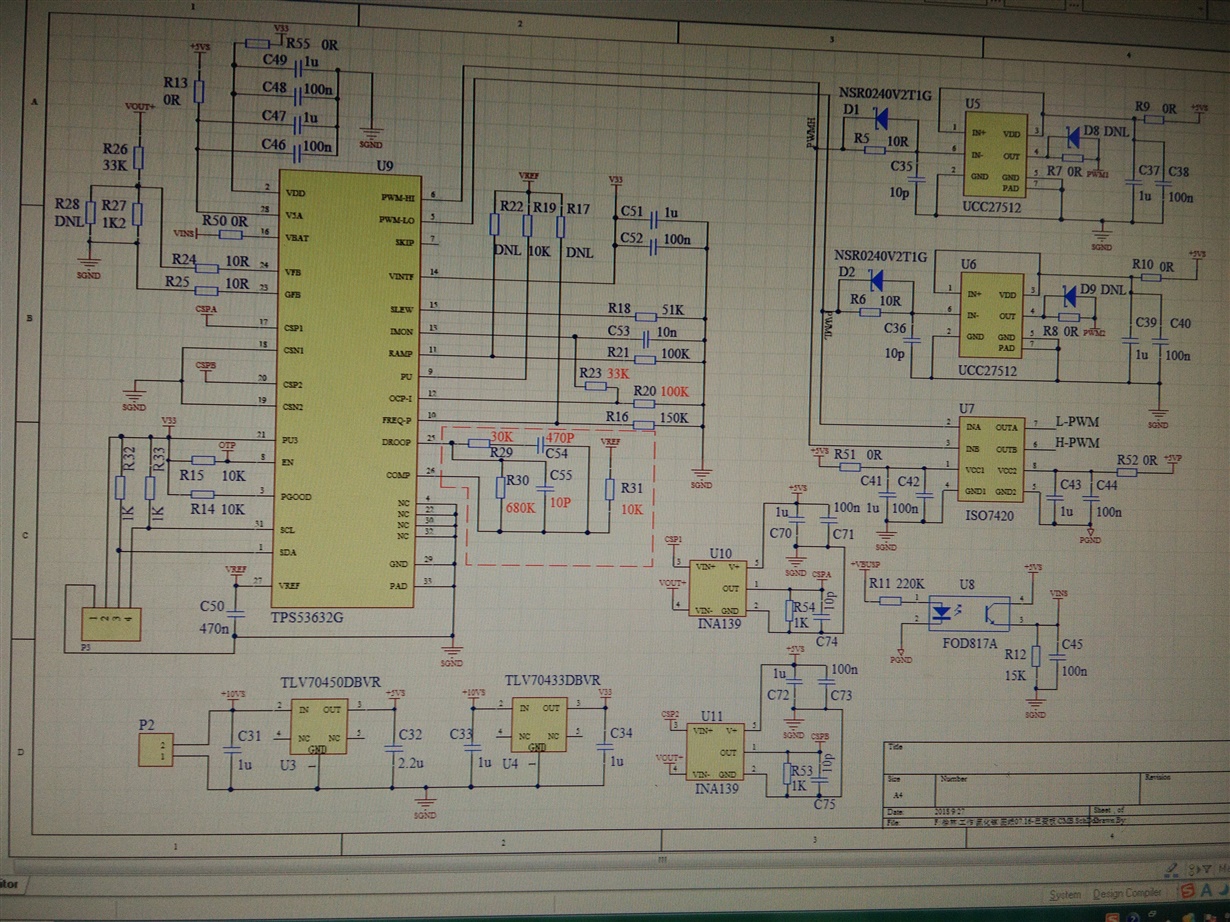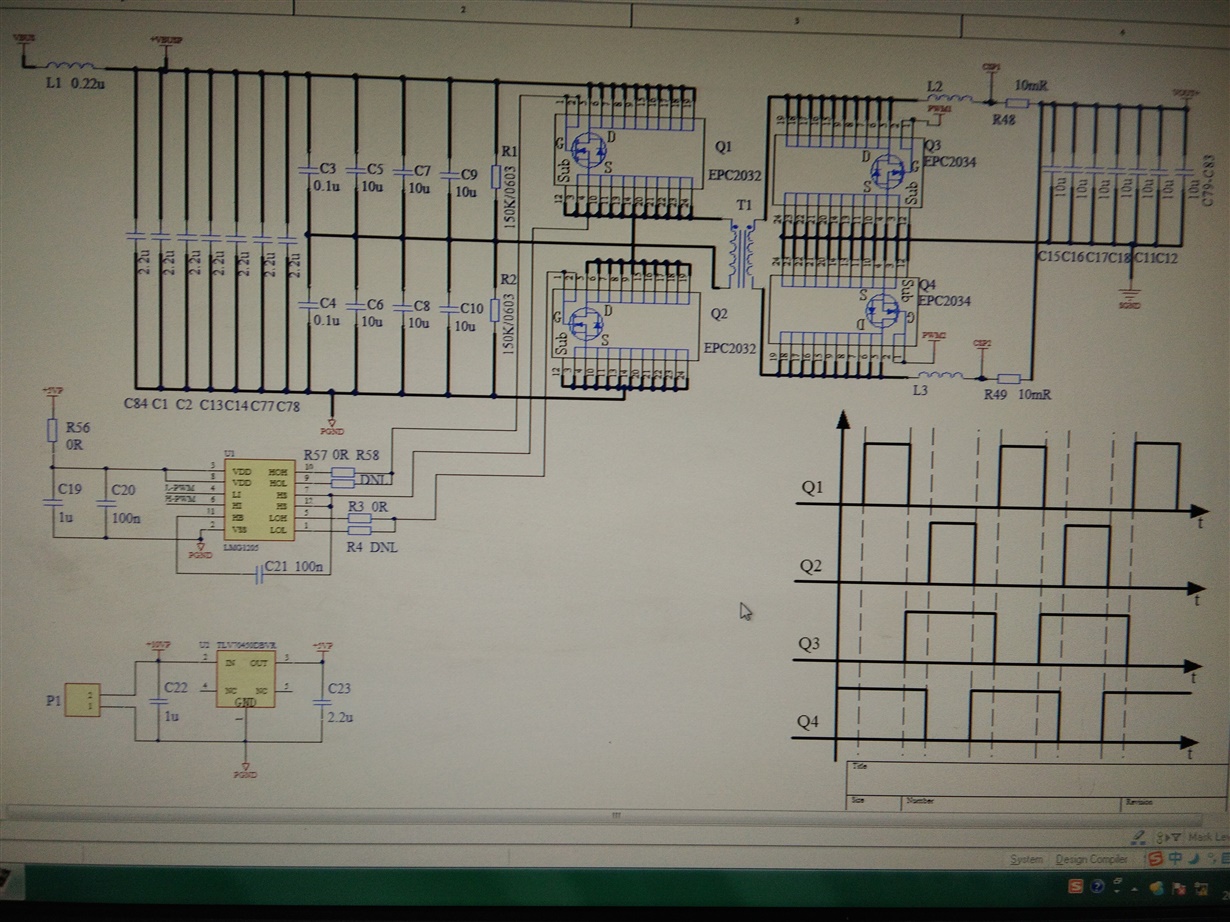Other Parts Discussed in Thread: UCC27512, LMG1205, INA139, , PMP4497
When the V5A and VDD are normal,the PWM1 and PWM2 are high level, the voltage values are about 4V, what is the reason?
This thread has been locked.
If you have a related question, please click the "Ask a related question" button in the top right corner. The newly created question will be automatically linked to this question.
Hello,
Assuming there aren't any assembly issues it's hard to say without a schematic. Would you be willing to send one along for review? What voltages are sitting at 4V - PWM or the outputs?
Also, please check to ensure the IC and FETs are both soldered down correctly without shorts or bridges.
Thanks,
Carmen
Hello! The first is the control part, and the second is the power part. VO is28V, IO is 10A, frequency is 1M. The primary driver chip is LMG1205. Current sampling uses INA139. What is the starting time sequence of TPS53632G? In other words, how to make the chip output with auxiliary power supply only?

Hi!
The auxiliary power comes from a regulated power supply with a voltage value of 10V, which is converted to 5V and 3.3V through LDO. 5V power is supplied to V5A (pin 28)and 3.3V is supplied to VDD (pin2) and VINTF(pin 14). When these voltages are normal, the EN pin (pin 8) is pulled to a high level, and then PWM1 and PWM2 will have 7 pulse width outputs. The first is the partial output of the pin 6, the second is the total output of the pin 6, the third is the partial output of the pin 5, and the fourth is the total output of the pin 5. After 7 pulse width output, the two pins are always low.
I refer to TI's design:www.ti.com/.../tidrnb0.pdf
The difference is that my design output is 28V, 10A. Current sensing is used resistance, the sample value is processed by INA139 and sent to the CSNx (pin18 and 19) and CSPx(pin17 and 20).
Hello,
Thanks for sending along the scope caps and details. Just to make sure i'm reading your posts properly, can you please confirm the following:
Depending on which of those is true you may be violating the datasheet for the controller. On page 7 - EN can only be pulled high after 5V, 3.3V, and VIN are present. Otherwise the controller will likely detect a fault and shutdown after a few pulses which is what you're seeing.
Also, if your transformer turns step the voltage down from VIN then going from 10Vin to 28Vout is not possible.
The link to the TI Design you posted is broken unfortunately, can you please give me the number so I can look it up?
Thanks,
Carmen